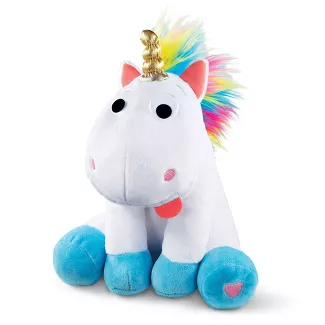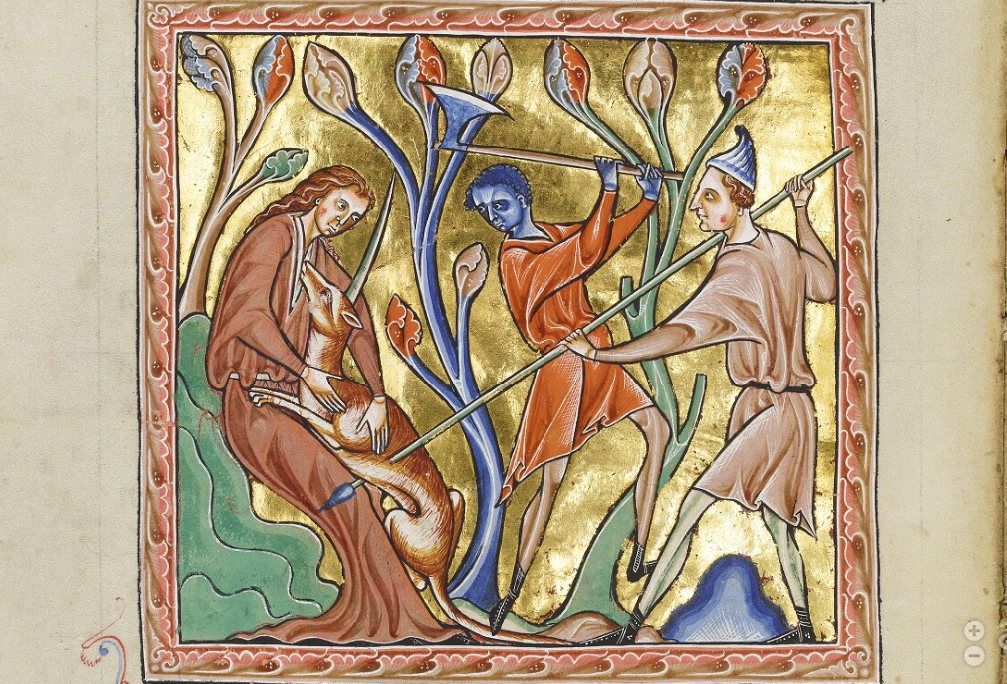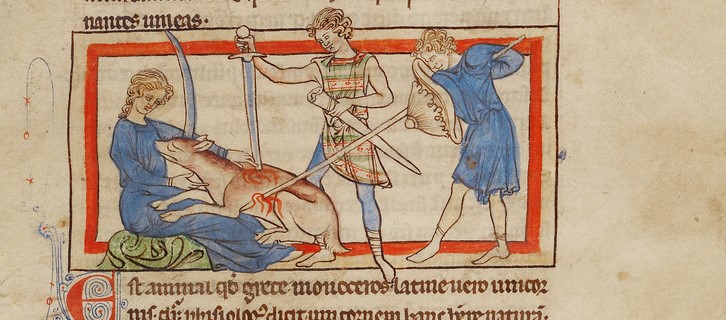While you were doing your holiday shopping last year, there’s a good chance that you ran into some kind of unicorn toy. From backpacks to board games, unicorns are definitely having a moment right now. And while you may think that unicorn ubiquity is a new thing, these mythical creatures have actually been a hot topic for years…especially in medieval artwork.

Wherever the idea of a unicorn originated from, unicorns were firmly established as creatures in medieval western Europe. Not that anyone had necessarily seen one–we know that the idea of unicorns was around, though, thanks to the medieval bestiary. The bestiary was a medieval book that basically functioned as a sort of encyclopedia of plants, animals, and minerals accompanied by a Christian moral lesson (that often wasn’t exactly biologically correct, but served the book’s purpose of showing that the creatures of the earth reflected their creator). For example, a bestiary’s section on lions would not only include a description of a lion, but note that the breath or lick of a lion would resurrect its cubs, like God resurrected Jesus. Like we said, not biologically true, as lions don’t do this, but it probably made for a rockin’ sermon in the 12th century. It probably also helped that some of the bestiary’s featured creatures resided outside of Europe, or were entirely fantastical, which probably made the stories’ appeal stronger.
Which is where the unicorn comes in. Unicorns are, according to most medieval bestiaries, pure and fierce horse-like horned creatures (an allegorical representation similar to Christ). A unicorn’s horn could render poison ineffective, among many other uses. Since humans are the worst, they would mainly want to capture and kill unicorns, for funsies to obtain a horn. The bestiary would note that the only way to catch a unicorn would be to lure it out of its home in the woods by sending a virgin girl there (reflective of the Virgin Mary). Since virgin girls’ laps are apparently nice places for unicorns to fall asleep, the unicorn would come out and gently rest its head on the girl and fall asleep–only to be captured or slain by hunters in many depictions.

This whole cycle could act an allegorical representation of Christ’s crucifixion, and made for some of the most dramatic illuminations in bestiaries. Which was also quite sad, as the moment pictured was often the unicorn’s death. Depressing, and a far cry from our fun unicorn toys today.

Though bestiaries tend to focus on the unicorn’s death, there’s at least one tapestry out there that we can take heart from. One of the most famous medieval tapestries, The Unicorn in Captivity from c.1495-1505 shows a live unicorn. Yes, he’s in a paddock, but the gate isn’t too high, and he seems like a happier fellow than his earlier, dying bestiary counterparts. And, since he’s one of the few happy medieval unicorns, we’ll end this post with him.

So the next time you see another superfluous unicorn toy, just think: at least there’s no gore.
Discover more about unicorns in bestiaries at the Getty and the British Library, and unicorn tapestries from the Met.
What do we do here at the Art Docent Program? Find out more about us and our curriculum here!
Want more on art history and medieval art? Check out the rest of our blog!







